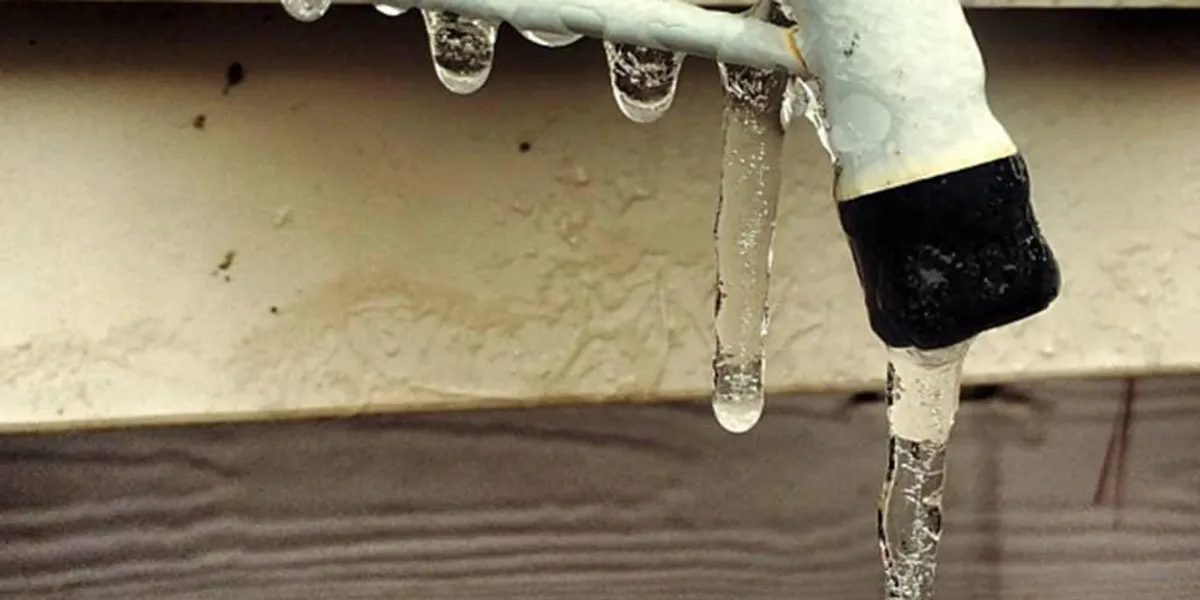Tips to Protect Your Plumbing from Cold Weather: Essential Tips
Tips to Protect Your Plumbing from Cold Weather: Essential Tips
Blog Article
The publisher is making several great points related to Winter Plumbing Precautions: Preventing Frozen Pipes as a whole in this great article beneath.

Winter can ruin your pipes, particularly by freezing pipes. Here's how to avoid it from happening and what to do if it does.
Introduction
As temperature levels decline, the danger of frozen pipes boosts, potentially leading to pricey repair work and water damage. Comprehending exactly how to prevent icy pipes is crucial for home owners in cold climates.
Avoidance Tips
Protecting prone pipes
Cover pipelines in insulation sleeves or make use of warmth tape to shield them from freezing temperatures. Concentrate on pipes in unheated or external locations of the home.
Heating techniques
Keep interior rooms appropriately warmed, specifically locations with pipes. Open cupboard doors to permit warm air to circulate around pipelines under sinks.
How to recognize frozen pipes
Search for decreased water circulation from faucets, unusual odors or sounds from pipelines, and visible frost on subjected pipelines.
Long-Term Solutions
Architectural adjustments
Take into consideration rerouting pipelines away from exterior walls or unheated locations. Include additional insulation to attic rooms, basements, and crawl spaces.
Updating insulation
Invest in premium insulation for pipes, attic rooms, and wall surfaces. Appropriate insulation assists maintain regular temperatures and lowers the risk of frozen pipes.
Safeguarding Exterior Pipes
Yard hoses and exterior taps
Disconnect and drain pipes yard pipes before winter. Set up frost-proof faucets or cover outside faucets with insulated caps.
Recognizing Frozen Pipes
What causes pipes to ice up?
Pipes freeze when subjected to temperatures below 32 ° F (0 ° C) for prolonged periods. As water inside the pipelines ices up, it broadens, taxing the pipe wall surfaces and possibly creating them to burst.
Threats and damages
Icy pipes can bring about supply of water interruptions, property damages, and pricey repairs. Ruptured pipelines can flood homes and cause comprehensive structural damage.
Signs of Frozen Pipeline
Determining icy pipelines early can stop them from bursting.
What to Do If Your Pipes Freeze
Immediate actions to take
If you believe frozen pipelines, keep faucets open to ease stress as the ice melts. Utilize a hairdryer or towels soaked in warm water to thaw pipelines gradually.
Conclusion
Avoiding icy pipes needs aggressive steps and fast responses. By recognizing the causes, signs, and safety nets, homeowners can shield their plumbing during winter.
5 Ways to Prevent Frozen Pipes
Drain Outdoor Faucets and Disconnect Hoses
First, close the shut-off valve that controls the flow of water in the pipe to your outdoor faucet. Then, head outside to disconnect and drain your hose and open the outdoor faucet to allow the water to completely drain out of the line. Turn off the faucet when done. Finally, head back to the shut-off valve and drain the remaining water inside the pipe into a bucket or container. Additionally, if you have a home irrigation system, you should consider hiring an expert to clear the system of water each year.
Insulate Pipes
One of the best and most cost-effective methods for preventing frozen water pipes is to wrap your pipes with insulation. This is especially important for areas in your home that aren’t exposed to heat, such as an attic. We suggest using foam sleeves, which can typically be found at your local hardware store.
Keep Heat Running at 65
Your pipes are located inside your walls, and the temperature there is much colder than the rest of the house. To prevent your pipes from freezing, The Insurance Information Institute suggests that you keep your home heated to at least 65 degrees, even when traveling. You may want to invest in smart devices that can keep an eye on the temperature in your home while you’re away.
Leave Water Dripping
Moving water — even a small trickle — can prevent ice from forming inside your pipes. When freezing temps are imminent, start a drip of water from all faucets that serve exposed pipes. Leaving a few faucets running will also help relieve pressure inside the pipes and help prevent a rupture if the water inside freezes.
Open Cupboard Doors
Warm your kitchen and bathroom pipes by opening cupboards and vanities. You should also leave your interior doors ajar to help warm air circulate evenly throughout your home.

As a devoted person who reads about How to prepare your home plumbing for winter weather, I imagined sharing that piece of content was worth the trouble. Sharing is nice. Helping people is fun. I value reading our article about Helpful Tips to Prevent Frozen Pipes this Winter.
Book An Estimate Now Report this page